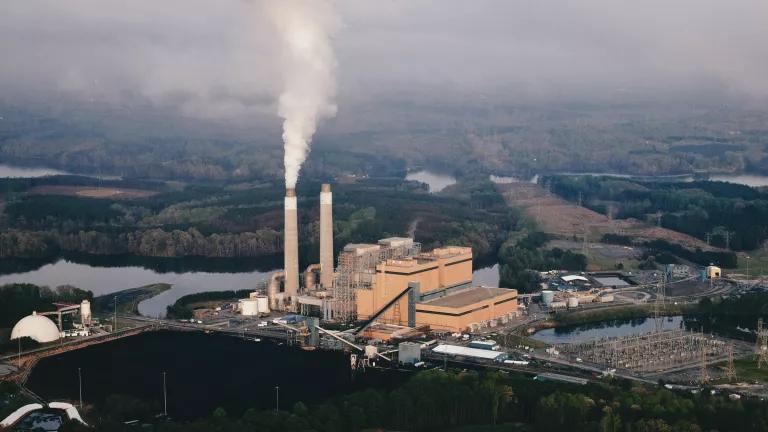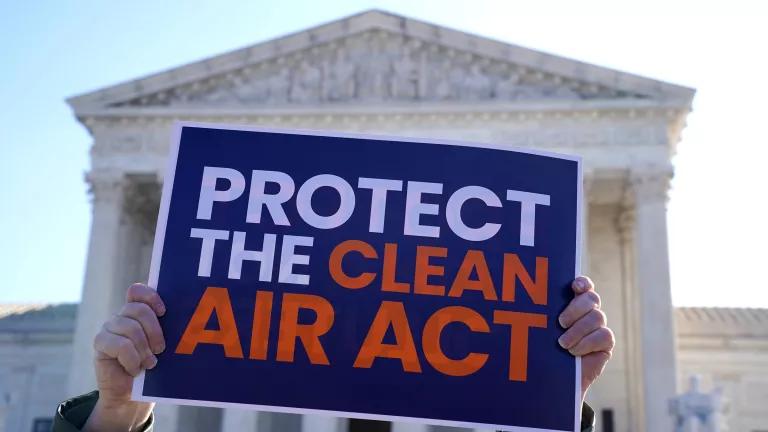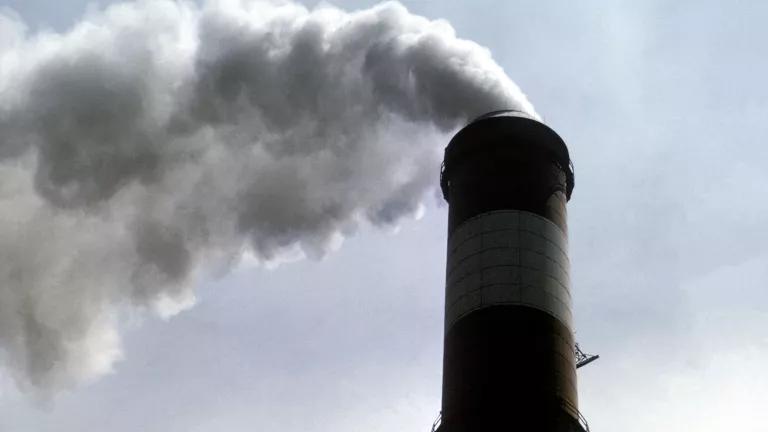Power Plant Carbon Rules: What’s Changed Since the 2023 Proposal?
The EPA's finalized rules for carbon emissions from the power sector have just been released. Here's how they've evolved.

Emissions rise from Duke Energy's Belews Creek Steam Station in North Carolina
Ian Mahathey, flight courtesy of Southwings
This morning, the U.S. Environmental Protection Agency (EPA) issued final rules to reduce carbon emissions from the power sector. Together with the Inflation Reduction Act, these rules will reduce power sector carbon pollution by 75 percent by 2035, compared to 2005 levels; they will also save hundreds of lives and avoid thousands of illnesses each year by reducing other pollution from the power sector, like nitrogen oxide, sulfur oxide, and particulate matter. Add in recent EPA rules to reduce greenhouse gas emissions from both vehicles and oil and gas operations and the United States is on pace to reduce overall economy-wide carbon emissions more than 40 percent by 2030, according to NRDC analysis. My colleague Amanda Levin covered the impact of these power plant rules, and the important work still to be done. And our fact sheet explains the legal basis for these rules under the Clean Air Act.
The final rules contain a handful of changes from last year’s proposal, including strengthening the rules to apply the most protective standards to more new gas plants and more existing coal plants. The EPA also conducted new reliability analyses and added limited compliance flexibilities to ensure that the power sector both reduces their emissions and meets rising electricity demand.
This blog provides a high-level overview of these changes.
Scope
Last year’s proposal covered three different segments of the power sector: existing coal plants, existing gas plants, and future gas plants constructed or modified after the date of the proposal. Following Administrator Michael Regan’s February announcement that the EPA will take additional time to finalize standards for the existing gas fleet, the rules issued today cover only existing coal plants and new/modified gas plants. It is critical to finish the job by covering carbon emissions and other dangerous pollutants from existing gas plants without further delay.
Best system of emission reduction (BSER)
Under Section 111(b) of the Clean Air Act, the EPA can set emission standards that apply directly to new plants constructed after the rule was proposed. Under Section 111(d), the agency also determines the emission standards that existing plants must meet, although these existing source standards are implemented by the states. In both cases, these standards are based on the emission reductions achievable by the “best system of emission reduction” as evaluated by the EPA, taking into account technical feasibility, cost, and other factors.
In the proposed rule issued last year, the EPA relied on two separate BSERs: hydrogen co-firing for gas plants and carbon capture and storage (CCS) for both gas and coal. In its final rule, the EPA set standards based solely on the application of CCS. These are performance standards: Under the Clean Air Act, states and operators can meet the required emission reductions in whatever manner they choose.
In addition to removing hydrogen from the BSER, EPA also simplified the way it categorized coal and gas plants and updated some of the timelines.
On the coal side, the rules still require that long-lived coal plants must meet a standard based on CCS. The EPA included more coal plants by applying this standard to any plant opting to operate after the beginning of 2039, rather than 2040, as proposed. The agency also changed the date by which these plants must meet the CCS-based standard from 2030 to 2032, giving operators more time to secure permits and construct pollution controls. Moreover, the EPA simplified requirements for plants that are expected to retire in the short run, such that state plans won’t have to include standards for plants retiring prior to January 1, 2032.
Standards for Existing Coal Plants
| May 2023 Proposal | April 2024 Final Rule | |
| Long-lived plants | For plants expected to run beyond 2040: 90% CCS by 2030 | For plants expected to run beyond 2039: 90% CCS by 2032 |
| Medium-term retirement | For plants retiring before 2040: 40% gas co-firing by 2030 | For plants retiring before 2039: 40% gas co-firing by 2030 |
| Near-term retirement |
For plants retiring before 2035: limited to historical emission rate and must operate under 20% capacity factor (CF) For plants retiring before 2032: historical emission rate |
For plants retiring before 2032: reporting requirements but no emission standards |
On the new gas side, the EPA is including a larger portion of heavily used new gas plants under the most stringent emission standards by lowering the capacity factor threshold for baseload plants to 40 percent, compared to the proposal’s 50 percent threshold. The EPA dropped hydrogen from the BSER for both the biggest, most-run baseload gas plants and for intermediate gas plants. Dropping hydrogen from the BSER, however, has only a small impact on the performance standards for new intermediate gas plants, approximately 1,150 pounds of carbon dioxide per megawatt hour (CO2/MWh) for efficient CTs versus approximately 1,000 pounds CO2/MWh with 30 percent hydrogen. And the most stringent, CCS-based standard now applies to a larger portion of the fleet.
Standards for New Gas Plants
| May 2023 Proposal | April 2024 Final Rule | |
| Peaker/Low Load | <20% CF: lower emitting fuels | Unchanged |
| Intermediate | 20% to ~50% CF: efficient simple cycle operation, plus 30% H2 blend by 2030 | 20% to ~40% CF: efficient simple cycle operation |
| Baseload | > 50% CF: H2 pathway (30% H2 blend by 2032, 96% H2 blend by 2038) OR CCS pathway (90% control by 2035) |
> 40% CF: CCS at 90% control by 2032 |
Compliance flexibilities/reliability
As NRDC highlighted in our reliability comments filed in December, the Clean Air Act already provides sufficient leeway for operators to meet these standards while accounting for both short- and long-term reliability needs. However, the EPA has also introduced additional opportunities for operators to seek limited one-year deadline extensions when circumstances outside of their control create roadblocks they cannot overcome, despite good faith efforts.
In addition, the agency has conducted significant new analysis focused on reliability, including sensitivity analyses demonstrating that operators can reduce their emissions in accordance with the entire suite of power plant rules, even under high-demand scenarios (e.g., simultaneous implementation of these standards, increasing vehicle electrification, booming AI and crypto, etc.).
As my colleagues Christy Walsh and David Hawkins have discussed in more detail, grid reliability is an oft-raised objection to new clean air rules for the power sector. But time and again, utilities have proven they can reliably meet demand while simultaneously reducing emissions. And as a recent U.S. Department of Energy report highlights, it’s the dash for gas and overreliance on new gas generation to handle rising demand that may be the bigger threat to grid reliability.
The EPA’s new analysis—and the addition of new compliance extensions where warranted—provides solid evidence that these rules will not negatively impact grid reliability.



